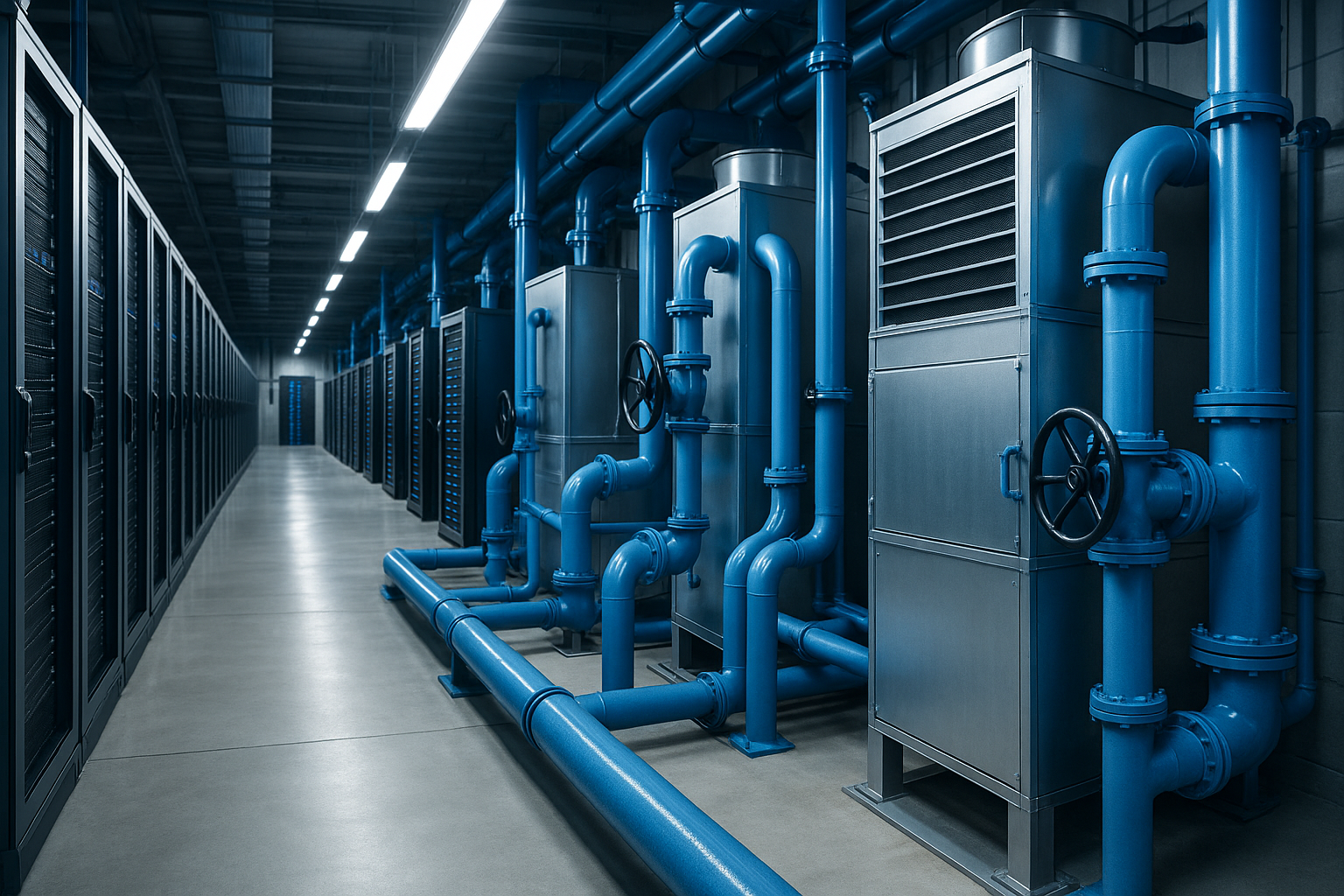Written by: Adri Sheppard
11 August 2025
As technological demand surges, data centers are consuming vast amounts of water, often at the expense of local communities and ecosystems. Rainwater collection can play a role in sustainable development within the industry.
Technological development has accelerated dramatically over the past decade. As our daily lives become increasingly data-driven, with cloud storage, video streaming, artificial intelligence, machine learning, and cryptocurrency, the infrastructure powering this transformation has quietly grown in scale and intensity.
At the center of this growth are data centers, the physical manifestation of technological advancement. These facilities process, store, and manage vast quantities of information 24/7. But their operation comes at a major cost: high energy consumption and significant water use, especially for facility cooling.
The United States is home to nearly 30% of all data center servers worldwide, and this number continues to climb as demand for digital services soars, especially with the growth of AI. By the end of 2025, the amount of data created and stored globally is expected to reach upwards of 180 zettabytes, a six-fold increase since 2018, as determined by recent studies conducted by Virginia Tech civil engineering professor Md Abu Bakar Siddik and colleagues.
To handle this data load, data centers require a constant supply of water, which is typically filtered and deionized on-site to remove minerals, salts, and other impurities found in municipal water. This filtration process is critical for preventing corrosion in the liquid cooling loop and clogging of fluid channels, particularly for cooling the thousands of high-performance servers housed in each facility. An average-sized data center can use up to 5 million gallons of water per day to maintain safe operating temperatures, though these numbers fluctuate depending on several factors, including site expansion and weather changes in the area.
In many cases, this water is drawn directly from municipal water supplies, placing tremendous pressure on local systems, especially in rural or drought-prone areas. As a result, communities are seeing rising water costs, reduced availability, and growing public concern. Numerous cases have been documented across the U.S. where data centers have drained reservoirs, lakes, rivers, and municipal systems with few repercussions, due largely to the lack of regulation surrounding their resource use.
Compounding the issue is the lack of adequate forecasting. Data centers have become one of the biggest unknowns in energy and water planning, often growing faster than utilities and municipalities can accommodate.
Data centers now rank among the top ten water-consuming industrial sectors in the U.S., yet there are few regulations limiting their water use or mandating transparency. According to the American Society of Civil Engineers, only about 51% of data centers track their water usage at all, and even fewer report usage across their entire facility portfolios.
Meanwhile, 20% of U.S. data centers are located in moderately to highly water-stressed regions, particularly in the western United States. This geographic reality makes their impact even more pronounced and their sustainability more urgent.
Rainwater Harvesting as a Strategic Solution
Rainwater harvesting offers a practical, decentralized solution to reduce the burden on municipal water supplies while supporting data centers’ growing water needs. By capturing, filtering, and reusing rainwater on-site, facilities can supplement, or in some cases replace, potable water used for non-potable applications such as cooling towers.
A well-designed rainwater harvesting system can:
- Reduce strain on local infrastructure
- Lower water bills and operational costs
- Demonstrate environmental stewardship
- Increase resilience during drought or emergencies
- Help meet sustainability benchmarks and regulatory requirements
Making the switch to rainwater collection is one of many steps data centers can take to improve sustainability in system design. However, to truly make a long-term impact, facilities should also adopt core best practices in water management, including:
- Setting usage benchmarks and performance goals
- Tracking and managing water and energy costs
-
Monitoring compliance with environmental standard
By implementing these strategies, data centers can better understand their footprint and proactively work toward sustainable infrastructure and operations.
Industry Adoption and RMS's Role
Major corporations, including Google, Meta, and X (formerly Twitter), have already taken initial steps toward sustainable water use, some in partnership with RMS. These organizations have begun incorporating rainwater harvesting systems into their data center designs. While these systems often supply only a fraction of a facility’s total water demand, their impact remains meaningful.
At RMS, we’ve supported data center developers in integrating rainwater collection, filtration, and reuse systems into their facilities. These systems not only help meet sustainability goals, but they also reduce dependence on strained public water systems.
Many data centers are being built in rural areas, where land is affordable, but water infrastructure is not equipped to support millions of gallons of daily water demand. That’s where rainwater systems play a critical role: providing a reliable, scalable, and environmentally responsible way to supplement potable water use and ease local strain.
Even when rainwater systems provide only partial support, their presence reflects a commitment to innovation, accountability, and climate-conscious development.
A Call to Smarter Water Use
As the data economy continues to grow, we face a pivotal decision: continue drawing on limited freshwater resources or adopt smarter, more integrated strategies for managing water in technology infrastructure.
Rainwater harvesting isn’t a silver bullet, but it is a scalable, proven solution that can help ease pressure on overburdened systems and protect the communities where data centers are being built.
Interested in Adding Rainwater Collection to Your Facility?
RMS designs rainwater harvesting systems for commercial and industrial clients (including data centers). Whether you’re planning a new build or retrofitting an existing site, we’ll help you design a system that meets performance goals, sustainability targets, and community expectations.

